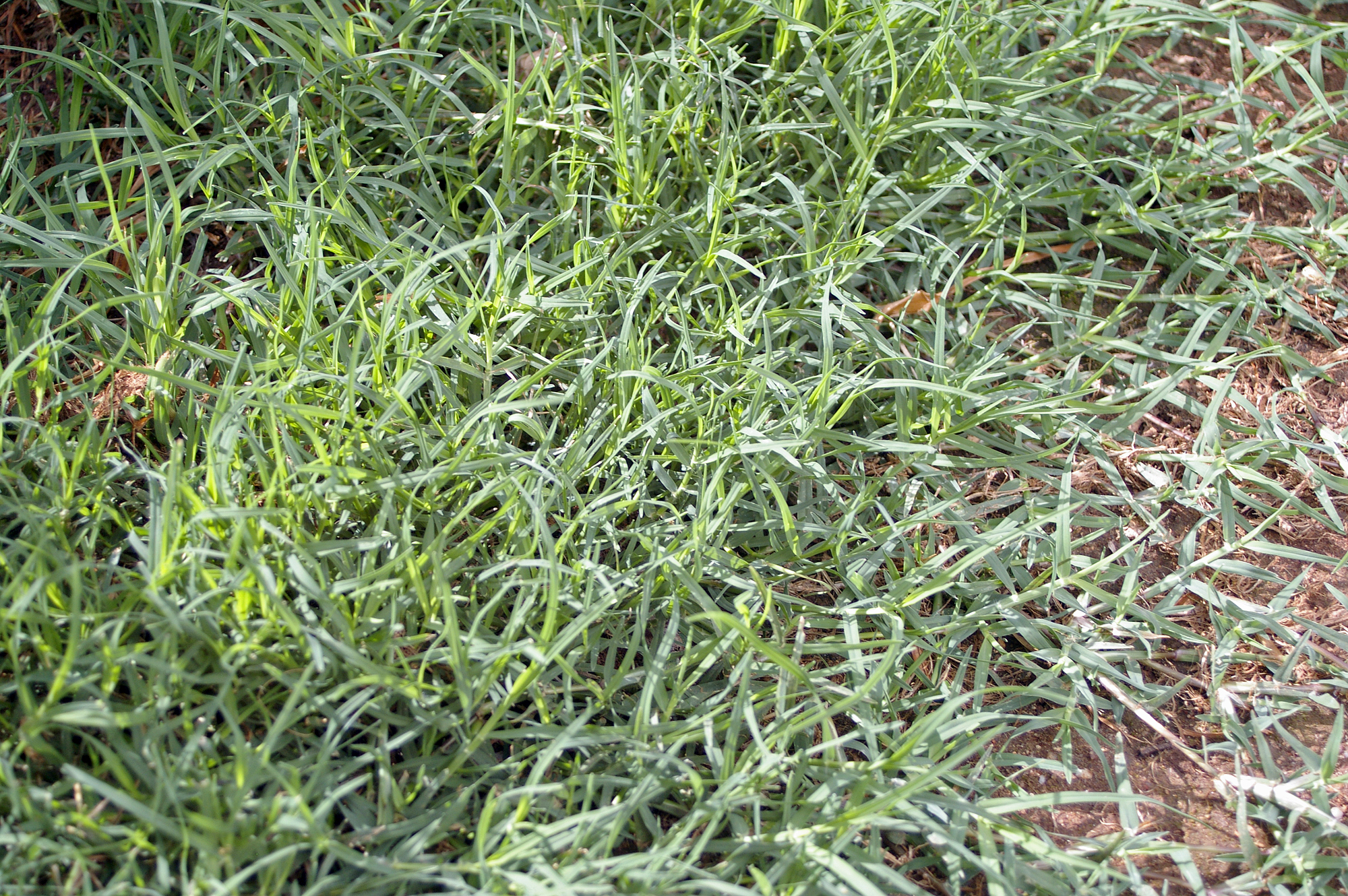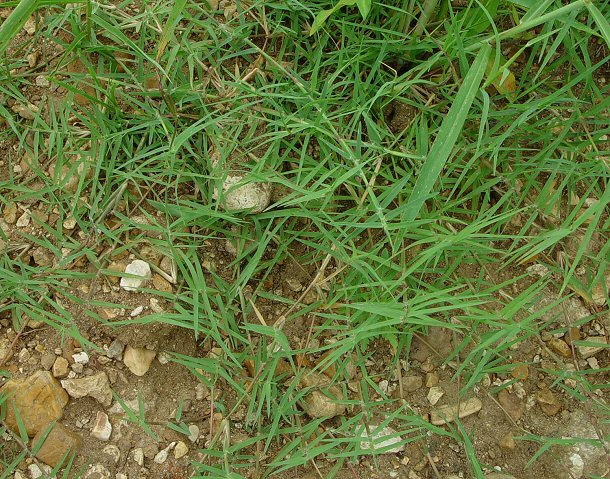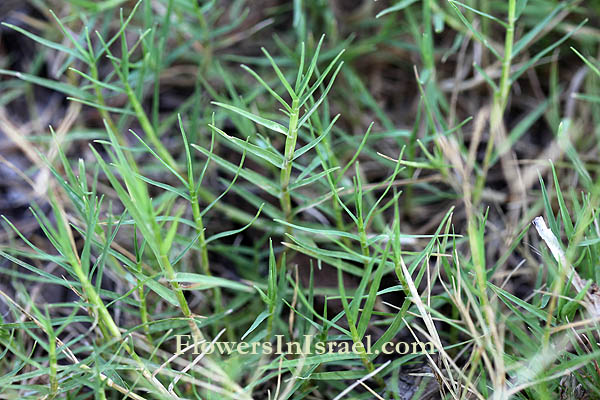Cynodon dactylon
Dog tooth grass ( Cynodon dactylon )
The dog tooth grass ( Cynodon dactylon ) is a plant of the family Gramineae ( Poaceae ). Originally native to the tropics and subtropics, it is naturalized among others in Central Europe.
Features
The whole plant is gray-green and reaches stature heights of 10 to 40 cm. It has a up to 1 meter long, branched rhizome and long, aboveground creeping shoots. In this way the dog tooth grass often forms dense turf. The aerial shoots have many nodes at which some buds of renewal shoots sit. The stems are erect to geniculate - ascending, vielknotig at the base and have short internodes, so that the leaf blades are tufted. In the upper third are only one or two nodes with long internodes. The plant branches at the lower nodes.
The leaf sheaths are serrated and hairy bald up top. At the opening are long tufts of hair on both sides of 3 to 4 mm. The ligule is a 0.5 -mm-long lashes. The leaf blades are 2-15 cm long and 3-4 mm wide, rough on both sides, short-haired and bald at the top to the bottom.
The ears are a threesome to sixth, where they start from a point. They are 2-6 cm long and 1-2 mm wide. The spikelets are 2.4 to 3.2 mm long and have a 1.5 mm long axis extension. The glumes are membranous, pointed and have a spike- haired Kiel. The lower glume is 1.8 to 2.2 mm, the upper 2.4 to 2.8 mm long. The lemma is 2 to 2.4 mm long, membranous and has a ciliated Kiel. The anthers are about 1.5 mm long. The details of the flowering period ranging from May to September.
The caryopses are about 1 millimeter long.
Dissemination and locations
The original home of the dog tooth grass is likely to be India, it is now common pantropical.
The dog tooth grass grows in Central Europe on sandy areas, such as along roadsides and on dumps. It prefers dry, nutrient-rich, humus- poor mostly sandy and loess soils. The species is crush resistant, drought resistant and somewhat tolerant of salt, also it is a light and heat pointer. The optimum growth temperature is 35 ° C. Dog tooth grass is scattered before in wine-producing regions, in the Pannonian region in Austria, it is often up scattered. In winter, the leaves die off, but the rhizomes also survive heavy frosts.
North of the Alps, it is not original and appears to have been naturalized here in the wake of the spread of viticulture. It is especially along the Rhine north to Cologne, continue in Brandenburg and Lusatia.
Use
In the U.S., the dog tooth grass is sown as a lawn, but also used as a forage grass. In the southern states it is one of the most drought- resistant pasture grasses and is also mowed. It provides good hay with high nutritional value.
In Bangladesh, the dog tooth grass is flooded annually during the Gangetic flood to six feet high and can withstand several weeks of flooding. Then the stocks are littered with Lathyrus sativus and used as pastures.
Documents
- Siegmund Seybold (ed.): Schmeil - Fitschen interactive. CD -ROM, Version 1.1, Quelle & Meyer, Wiebelsheim 2002, ISBN 3-494-01327-6.










